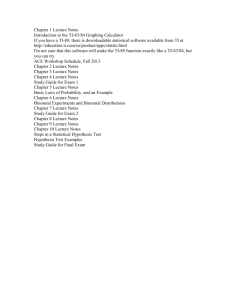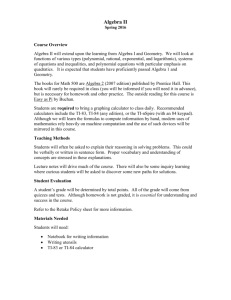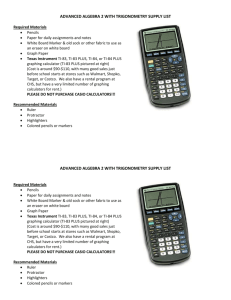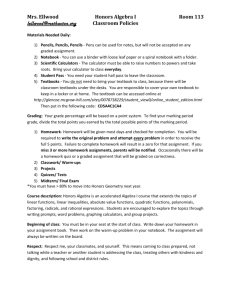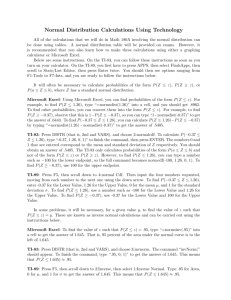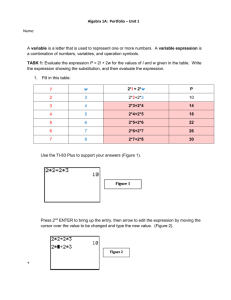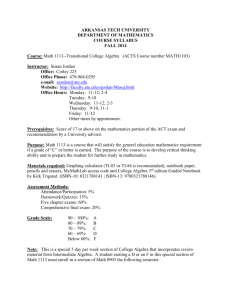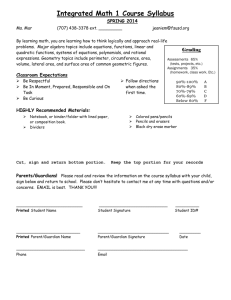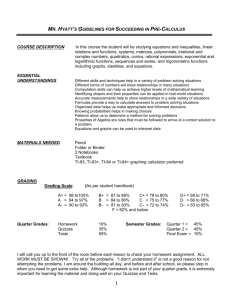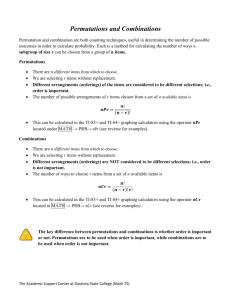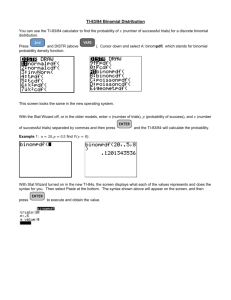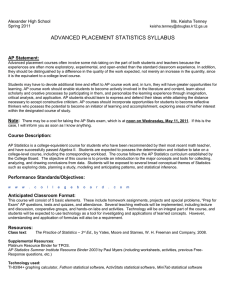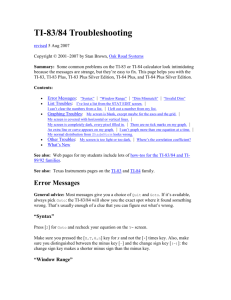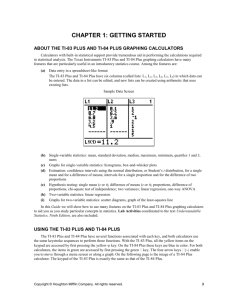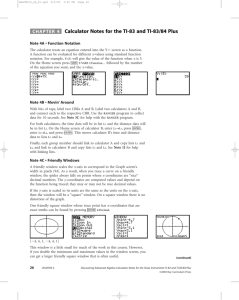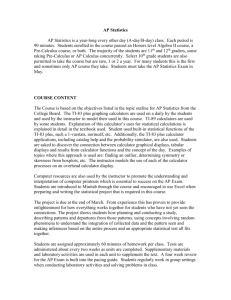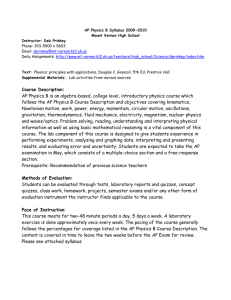AP Physics 1 - North Allegheny School District
advertisement
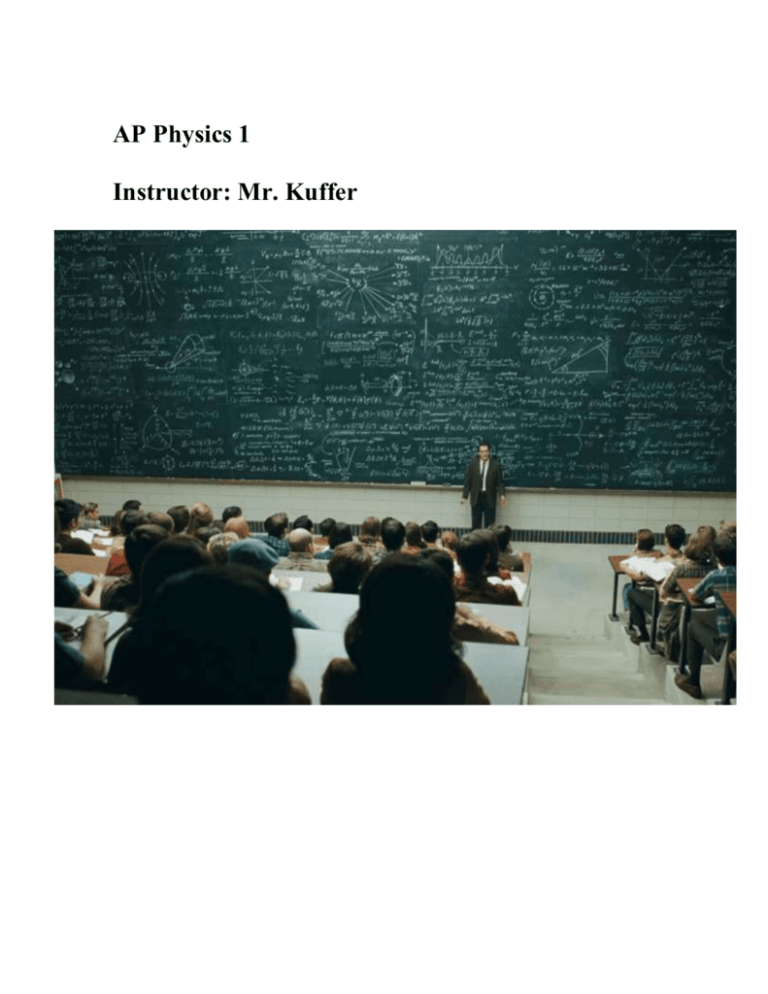
AP Physics 1 Instructor: Mr. Kuffer Course Overview Prerequisites 1. 80% or higher in Honors Algebra 2 (3202); or higher level math course; or 90% or higher in Academic Algebra 2 (3103). 2. 80% or higher in Honors Chemistry (4610) or 90% or higher in Academic Chemistry (4911). 3. Recommendation of prior year's Science Teacher. Textbook Cutnell & Johnson Physics 9e Big Ideas for AP Physics 1 Big Idea 1: Objects and systems have properties such as mass and charge. Systems may have internal structure. Big Idea 2: Fields existing in space can be used to explain to explain interactions. Big Idea 3: The interactions of an object with other objects can be described by forces. Big Idea 4: Interactions between systems can result in changes in those systems. Big Idea 5: Changes that occur as a result of interactions are constrained by conservation laws. Big Idea 6: Waves can transfer energy and momentum from one location to another without the permanent transfer of mass and serve as a mathematical model for the description of other phenomena. The Big Ideas for AP Physics 1 are correlated to the content of the course and to the lab and inquiry-based investigations done throughout the school year in the attached syllabus. The attached syllabus can be found on the College Board website. 2 NA Course Description AP Physics 1 No. 4062 Full Year/Full Time AP Wt. Grades 11, 12 Phase IV Credit 1.0 This course is designed to meet the demands of the AP Physics 1 syllabus as published by the College Board. The topics covered include Classical Mechanics, Waves and Sound, and an introduction to Electric Circuits. This course is equivalent to a one–semester terminal physics course at the college–level. The course is valuable to the student in two ways. The experience of having taken a college–level science class in high school will be a tremendous help when the student is in college. Secondly, the student can earn college credit by taking the AP Physics 1 exam at the end of the year. This of course depends upon how well the student does on the exam and the college and major in which the student enrolls. Please contact the specific college or university for more information. Mathematics, including trigonometry, geometry, and algebra will be used extensively in this course to solve problems and develop relationships between physical quantities. Although it is beneficial to have had Honors Physics or Academic Concepts of Physics prior to AP Physics 1, it is not required. This course meets five periods each week. Please note that the science department will be offering AP Physics 2 as a stand-alone course beginning with the 2015-2016 school year. Topics of study in AP Physics 1 will include: - Kinematics Newton’s Laws of Motion Torque Rotational Motion & Angular Momentum Gravitational and Circular Motion Work, Power & Energy Linear Momentum Oscillations, Mechanical Waves & Sound DC Circuits Throughout the year students can expect to employ critical thinking and reasoning skills as they investigate the topics of study (listed above). Observations obtained from these inquiry-based experimentations will be supported by physical models. This course requires that 25% of the instructional time is spent on laboratory work, with an emphasis on inquiry-based investigations that provide students with opportunities to demonstrate the foundational physics principles. - College Boards Students should also expect that traditional classwork (homework, quizzes, tests, etc…) will also be employed and used as a primary assessment tool. 3 Required Materials Item Textbook 3-Ring Binder Description Cutnell & Johnson Physics 9e Items handed out will be 3-hole-punched. All items are expected to be included in your binder. - Classroom Notes & Discussion Homework Lab Activities Unit Packet Equation Sheet Supplemental Handouts Lab Notebook 9 ¾ x 7 ¼ Lab Notebook Calculator Lab notebooks are instrumental in developing and demonstrating an understanding of physical concepts investigated throughout the year. One of the following calculators: Other Materials - TI-83, TI-83 Plus, TI-83 Plus Silver TI-84 Plus, TI-84 Plus Silver, TI-83 Plus C Silver TI-85 TI-86 TI-89, TI-89 Titanium - Pencils Erasers #2 Pencils Colored Pencils Pens Ruler 4 General Course Outline Courtesy of the College Boards 5 6 7 8 9 10
